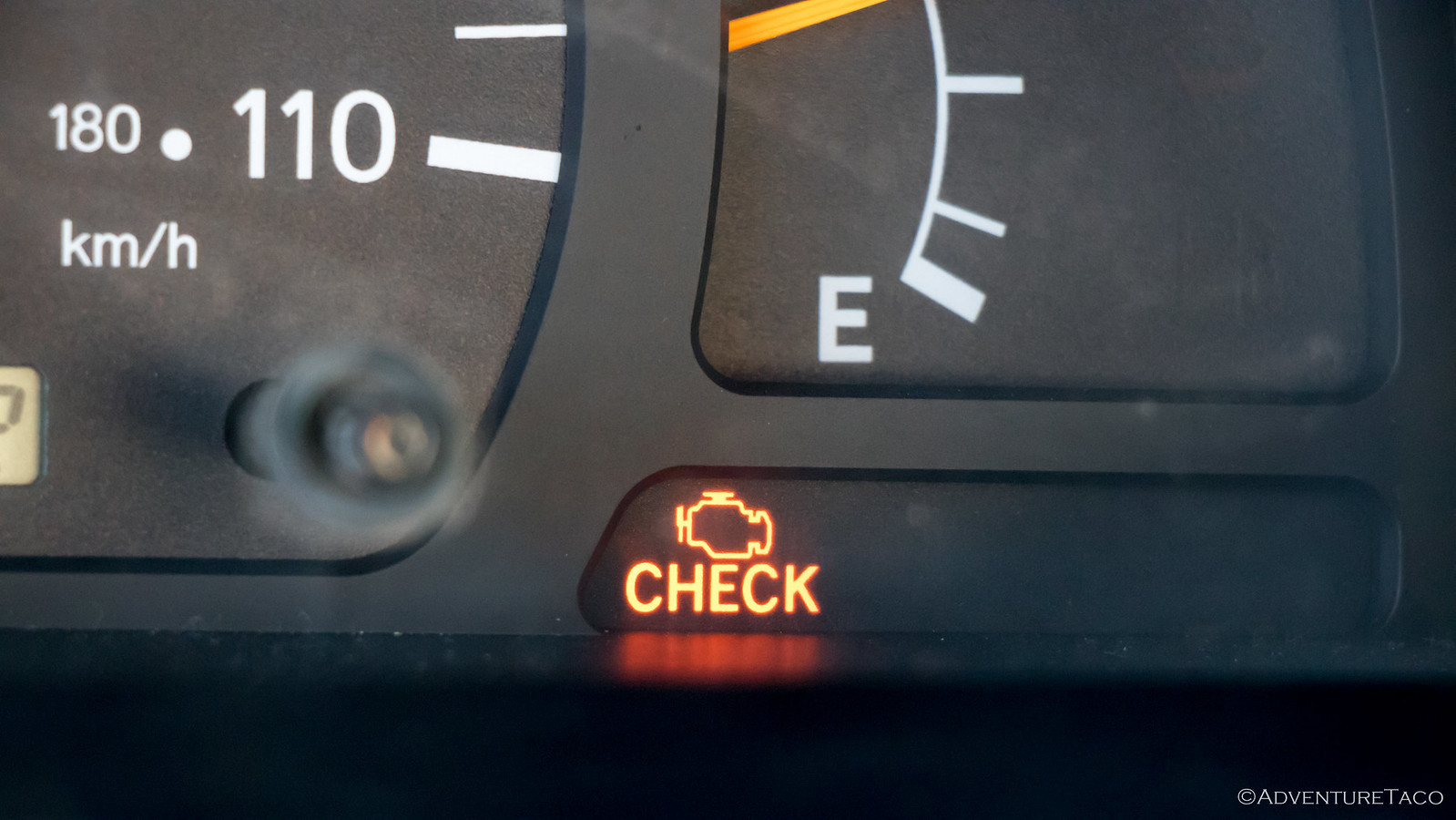TL;DR - I'm not doing anything yet, but having gotten a few P0120 check engine lights, I think I've worn out my Throttle Position Sensor.

This little bugger is starting to cause trouble.

This little bugger is starting to cause trouble.
It was a little more than two years ago - as I was exiting the park via Berdoo Canyon on my first ever trip to Joshua Tree - that I got my first P0120 check engine light.
Also known as a Throttle/Pedal Position Sensor “A” Circuit Malfunction, this code can be an indication that the Throttle Position Sensor (TPS) - the thing that tells the computer how much gas you're giving the vehicle - is going out, but it can also indicate a problem with the air intake system. In that case, the computer expects a certain amount of air to be measured at the MAF and through the throttle body, but instead it sees a different amount.
At the time - and especially since I was out on the trail - I gave the MAF and Throttle Body a good cleaning, since that was a lot easier than sourcing a throttle body position sensor that I could swap into the Tacoma. When the check engine light went off for six months or more - and with plenty of other things to worry about - I pretty much forgot about the whole thing.
Well, a year later - and now a few times a year after that - I've seen the check engine light come on as a result of the P0120 code, so it's probably an indication that my TPS is on the way out.
At its core, the TPS is essentially a potentiometric device. Internally, it features a variable resistor - a lot like a dimmer switch for a light - with a mechanically-actuated wiper that moves in tandem with the throttle plate. One end of the resistor is connected to a fixed reference voltage, while the other end is connected to ground. As the throttle opens or closes, the wiper glides across the resistive track, dynamically altering the resistance in the circuit. This change, in turn, modifies the output voltage, producing value that directly corresponds to the throttle’s position. The vehicle's computer (ECU) continuously reads this value to adjust engine functions like fuel injection and ignition timing for optimal performance.
The precise operation of the TPS is critical because even slight inaccuracies - due to wear on the resistive track or contamination on the wiper - can lead to fluctuating voltage signals. Such inconsistencies can result in erratic idling, poor throttle response, or poor fuel economy.
The part - Sensor, Throttle Position (89452-35020) - is a small little bugger, but is not inexpensive. Aftermarket Throttle Position Sensors can be had for less money, and would probably work fine, but Zane @Speedytech7 has been rebuilding 5VZFE engines of late, and happened to have an extra sensor that he was willing to part with when we were recently on a trip together Roaming Around Capitol Reef.

Though it's only a couple of screws to replace, I promptly stowed the new-to-me TPS under the driver seat, where I suspect it will remain until mine starts to give me more trouble. Why fix today, what you can put off until tomorrow? 
In this Series
Filed Under
![I've Worn Out My TPS (Throttle Position Sensor) [P0120 Check Engine Light] I've Worn Out My TPS (Throttle Position Sensor) [P0120 Check Engine Light]](https://live.staticflickr.com/65535/54550578694_197ca25c09_c.jpg)

![My Cats are Empty [P0420 Check Engine Light] My Cats are Empty [P0420 Check Engine Light]](https://live.staticflickr.com/65535/54550567999_6bda364eed_c.jpg)



